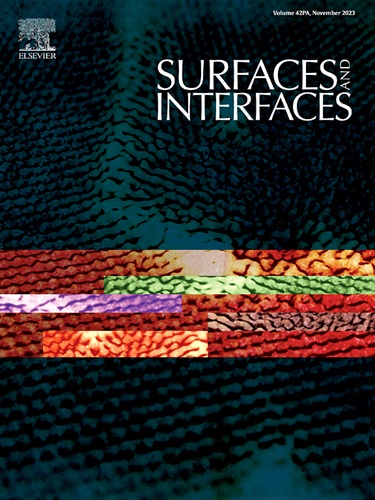Constructing N, O, S-tri doped carbon @ hard carbon architectures as advanced anodes materials for sodium-ion batteries
IF 5.7
2区 材料科学
Q2 CHEMISTRY, PHYSICAL
引用次数: 0
Abstract
Biomass-derived hard carbon from biological resources shows considerable potential as an anode material for sodium-ion batteries (SIBs). However, poor electrochemical performance and stability restrict their practical application. Herein, by growing polyaniline on the surface of poplar fibers and employing high-temperature calcination to form a N, O, S-tri doped carbon @ hard carbon bilayer structure (NOSC@HC), which enhances the platform capacity of the anode material. The resulting bilayer carbon has a reversible specific capacity of 317.42 mAh g-1 (current density:0.2 A g-1)(93.28 % of capacity remaining after 200 cycles) in a half-cell. The capacity in the plateau region (< 0.1 V) accounted for 58.9 % of the total capacity. When composed of the full cell, an energy density of 151 Wh kg-1 (0.2 A g-1) was achieved. Theoretical calculations indicate that multi-element doping within the carbon layer enhances the adsorption of sodium-ion from the original defects, improves electrochemical kinetics, and increases charge transfer through electron density rearrangement, leading to a strong sodium storage capacity for the NOSC@HC anode. Our results provide new research ideas and insights into the development and practical application of biomass-derived hard carbons.

构建N, O, s三掺杂碳@硬碳结构作为钠离子电池的先进阳极材料
来自生物资源的生物质硬碳作为钠离子电池(sib)的负极材料具有相当大的潜力。但其电化学性能和稳定性较差,制约了其实际应用。本文通过在杨树纤维表面生长聚苯胺,通过高温煅烧形成N, O, s三掺杂碳@硬碳双层结构(NOSC@HC),增强了负极材料的平台容量。在半电池中,得到的双层碳具有317.42 mAh g-1(电流密度:0.2 a g-1)的可逆比容量(200次循环后剩余容量的93.28%)。高原地区的承载力(<;0.1 V)占总容量的58.9%。当组成完整的电池时,能量密度达到151 Wh kg-1 (0.2 A g-1)。理论计算表明,碳层内的多元素掺杂增强了原缺陷对钠离子的吸附,改善了电化学动力学,并通过电子密度重排增加了电荷转移,导致NOSC@HC阳极具有较强的钠储存能力。我们的研究结果为生物质硬碳的开发和实际应用提供了新的研究思路和见解。
本文章由计算机程序翻译,如有差异,请以英文原文为准。
求助全文
约1分钟内获得全文
求助全文
来源期刊

Surfaces and Interfaces
Chemistry-General Chemistry
CiteScore
8.50
自引率
6.50%
发文量
753
审稿时长
35 days
期刊介绍:
The aim of the journal is to provide a respectful outlet for ''sound science'' papers in all research areas on surfaces and interfaces. We define sound science papers as papers that describe new and well-executed research, but that do not necessarily provide brand new insights or are merely a description of research results.
Surfaces and Interfaces publishes research papers in all fields of surface science which may not always find the right home on first submission to our Elsevier sister journals (Applied Surface, Surface and Coatings Technology, Thin Solid Films)
 求助内容:
求助内容: 应助结果提醒方式:
应助结果提醒方式:


